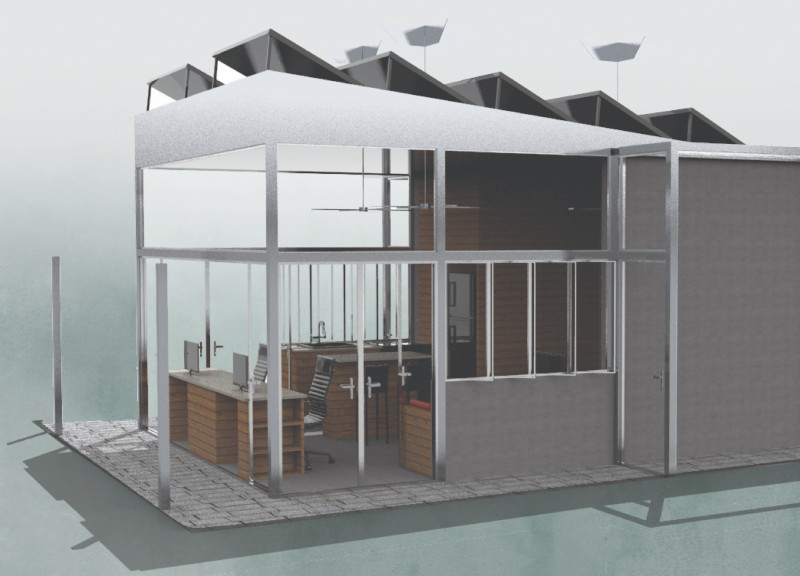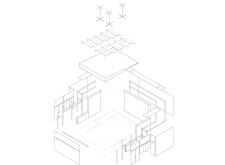5 key facts about this project
The Microhome project takes a thoughtful approach to compact living, responding to the challenges of urban environments where space is limited. It focuses on maximizing functionality while prioritizing comfort and sustainability. The design outlines clear divisions between public and private areas, accommodating various daily activities such as work, cooking, sleeping, and relaxation.
Functional Zones
The layout organizes the Microhome into distinct areas that fulfill specific functions. A dedicated work area is included within the overall design, ensuring that residents have a space for productivity. The living and cooking areas are combined to support social interactions, while the sleeping quarters are designed to offer privacy and rest. The incorporation of outdoor gardening space highlights the importance of connecting indoor living with nature.
Natural Light Optimization
Optimizing natural light is a major consideration in the design. The orientation of the Microhome allows for maximum exposure to northern, western, and southern sunlight. This careful arrangement reduces reliance on artificial lighting, enhancing the aesthetic experience of the interior and promoting energy efficiency. Such approaches contribute to a more sustainable and pleasant living environment overall.
Sustainable Water Management
Sustainable water management features prominently in the Microhome's design. Several systems are implemented to ensure efficient use of resources. For instance, a composting toilet serves as a responsible sanitation solution. Additionally, rainwater collection systems capture valuable water, reducing consumption. There is also a specific irrigation zone and a cistern designed to store rainwater for reuse, facilitating the maintenance of the garden and illustrating a commitment to environmental responsibility.
Ventilation and Thermal Comfort
The design pays particular attention to ventilation and thermal stability. Proper airflow is essential for maintaining comfort and air quality. Various strategies are included to enhance thermal stability, which addresses the challenges of different weather conditions. This focus ensures that the living space remains pleasant throughout various seasons of the year.
Each aspect of design blends functionality and sustainability, highlighted by the connection between indoor and outdoor spaces. The result is a living environment that fosters a sense of community while being attuned to the natural world.





















































